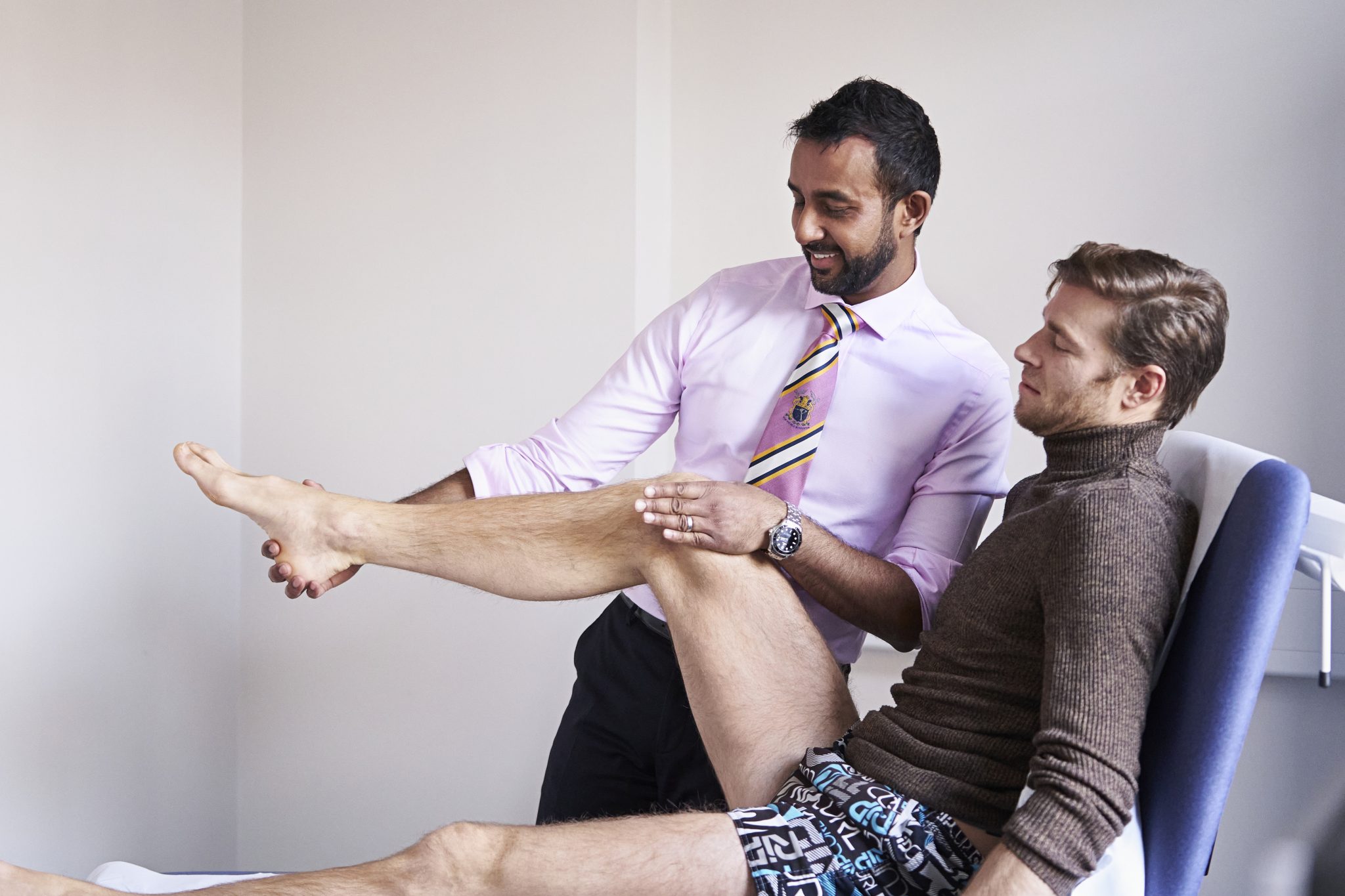Orthopaedic Expert Care You Can Trust

A lot of patients ask me whether there are other things that can be done before having joint replacement surgery. Usually, by the time I am seeing them, they have exhausted all simple measures such as activity modification and painkillers.
Injections can be very useful. As the hip joint is a deep structure covered by lots of muscles and tendons, injections need to be performed under the radiographic guidance from either an x-ray for an ultrasound (US) machine. Soemtimes US is needed for knee injections too.
Steroid injections
Steroid injections are often performed in combination with local anaesthetics. The local anaesthetic numbs the pain, whilst the steroid calms down any inflammation in the joint. These injections can provide pain relief very quickly. However, they vary in terms of how long they last for. Some patients say they last for a few weeks whilst others have reported relief for a year.

Side-effects
There are very few complications and the rate is low. They include:
- Worsening of pain – Relieved by taking extra painkillers such as paracetamol and anti-inflammatories
- Temporary bruising at the injection site
- Flushing of face
- Loss of Fat at the injection site – causing dimpling of skin and rarely can be permanent
- Skin colour changes – maybe paler and this could be permanent
- High blood pressure – if you have your blood pressure problems already
- Infection – this is rare and any redness, swelling with increased pain should be reported immediately
How many steroid injections can I have?
I frequently get asked this question by patients. A lot of people have said ‘I’ve been told they can have only three injections’. This is a good rule of thumb, however, if injections keep working I am a happy to offer more. This is on a case by case basis and depends on how many injections have been had previously and over what timeframe.
Hyaluronic acid
Hyaluronic acid is one of the key components of synovial fluid inside the joint. It is a viscous (jellylike) lubricant, which gets injected into the knee or hip. They can offer long lasting relief if they are effective and do not have the same side-effect profile of steroids. I have read a number of scientific studies reporting good results that appear to be lasting longer than steroids. Furthermore, patients can have a second injection at around six months to maintain symptom relief. Its use is well established in the knee joint, and emerging research is supporting its use in the hip joInt. Some studies have shown that patients need fewer painkillers afterwards and have an earlier return to function.
Platelet–Rich Plasma (PRP) Injection
This is a form of regenerative therapy. They can help manage pain from early arthritis in the joint as well as painful tendon and ligament inflammation. It’s been suggested that PRP promotes healing of soft tissues by delivering a high concentration of platelets which secrete growth factors in the diseased area and promotes its healing.
There have been several randomised trials suggesting that it has good relief of pain that can last for a long period of time. Patients in the studies have also demonstrated an improvement in their hip function. My reservations are that the quality of the research is relatively poor and further research needs to be performed. All of my patients in which I recommend this intervention are entered into a research database so that I can collect outcomes, with the results being used in future research studies.
Bone Marrow Aspirate Concentrate (BMAC)
BMAC is rich in stem cells, which are being increasingly used in regenerative medicine. Stem cells have the potential to transform into the tissue to renew or repair damaged parts of the body. BMAC is usually harvested from the iliac crest (the bony part of your pelvis that is sticking out) by inserting a needle and withdrawing the fluid inside the bone.
Adipose Tissue (Fat cells)
This is also called Lipogems. They are thought to have healing and regenerative properties. Lipogems are usually harvested from the waist and then ‘purified’ to remove non-essential factors or inflammatory components before being injected into area of concern. This is still very much an experimental technique and there is no long term data to support this technique yet.
Knee Bracing
These are supports that are worn when there is pain in the knee. They can be used in a preventive fashion when playing sports or in a functional manner, providing support to the knee to promote healing following an injury. Furthermore, I have used them successfully in patients with arthritis where one of the compartments of the knee is unloaded by shifting weight to another compartment. This has prevented the need for surgery (either knee arthroscopy or knee replacement). A lot of insurance companies have now authorised this form of treatment.
Cartilage Repair Techniques
There are a number of different surgical techniques that can be used in the hip and knee to promote healing or regeneration where there has been cartilage loss. I have performed extensive research around this topic (including a thesis) and will be happy to discuss this in more detail with you. Techniques include:
Microfracture
Small holes are made in the bone which releases growth factors promoting the formation of cartilage like tissue over the defect.
Autologous Matrix-Induced Chondrogenesis (AMIC)
A scaffold that is biologically active is used to cover the defect after microfracture is performed to maintain more of the growth factors in the joint.
Autologous Chondrocyte Implantation (ACI)
This is a two-stage procedure where cartilage cells are harvested from one part of your joint and then sent to the lab to be expanded in the first stage. The second stage occurs after a period of 4-6 weeks when the cells have been expanded in culture medium. They are re-implanted into your joint where the cartilage defect is.
